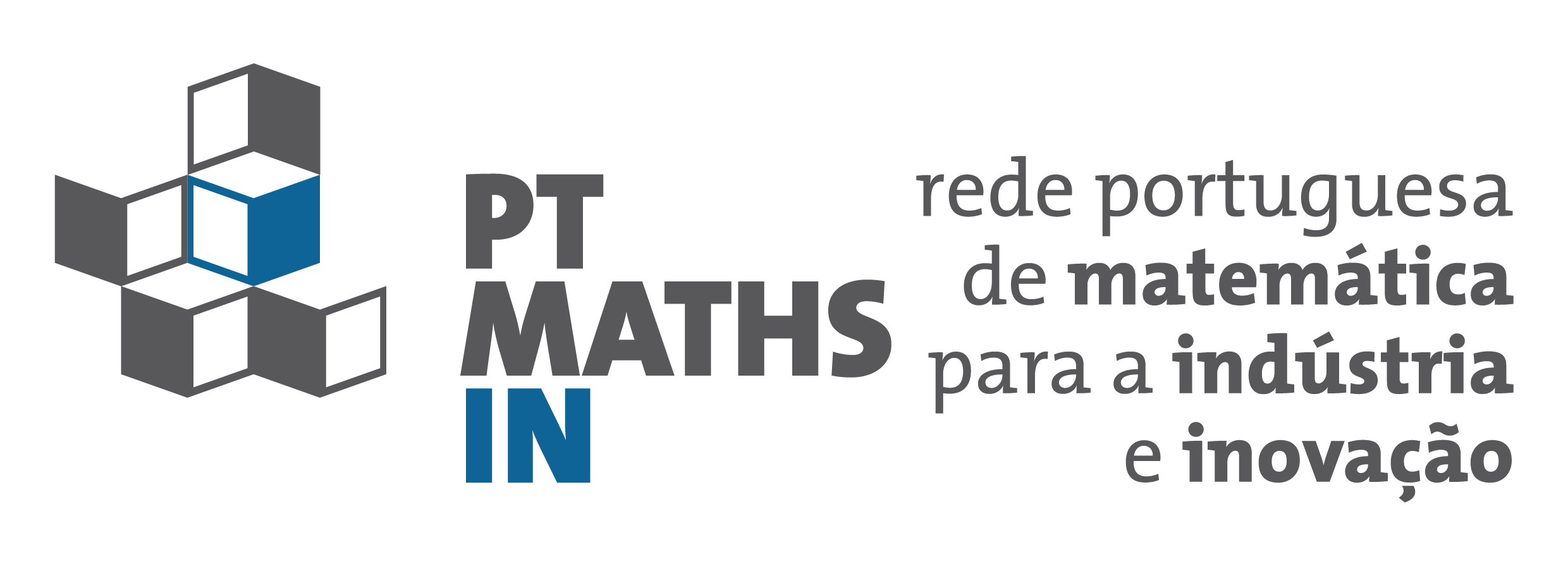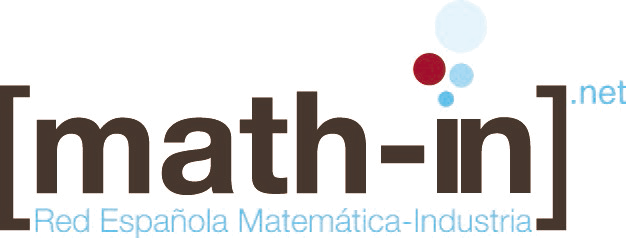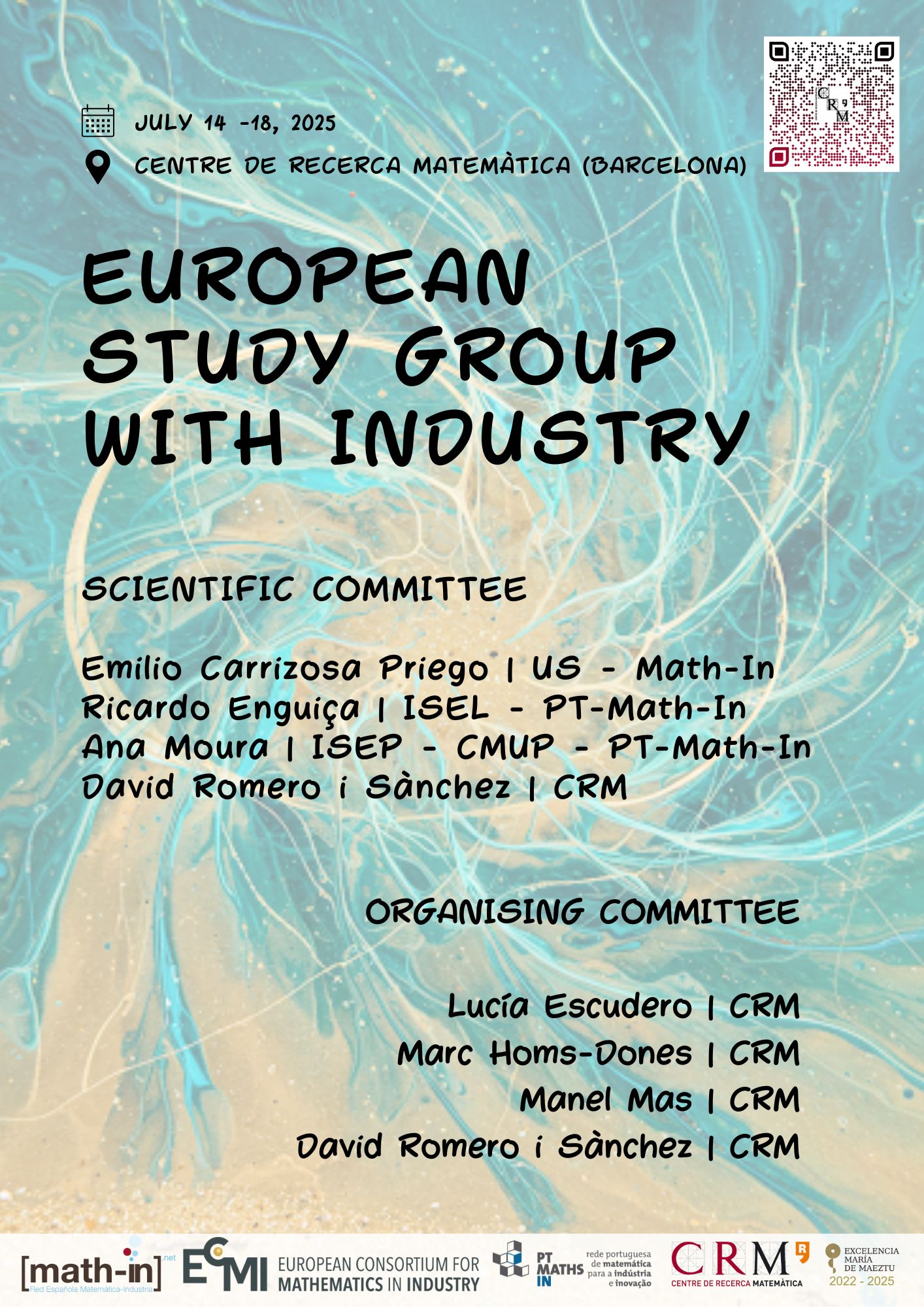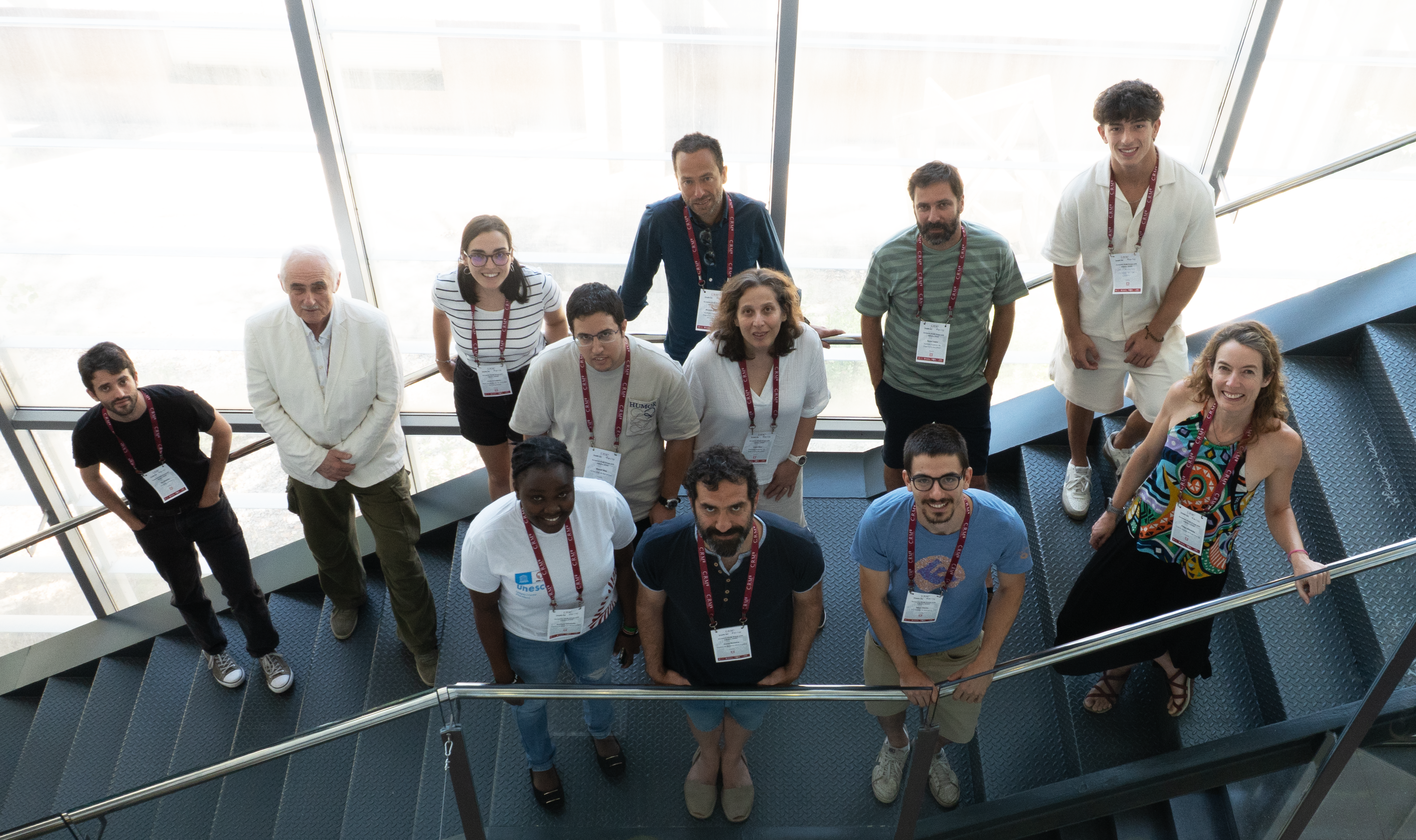European Study Group with Industry (ESGI)
Sign into July 18, 2025
Venue: CRM
Introduction
The ESGI is an established initiative that connects mathematicians with industry professionals to solve complex real-world problems using advanced mathematical techniques. Originating in 1968 at the University of Oxford, ESGI has grown into a Europe-wide network that supports industrial innovation through mathematics.
Each ESGI is an intensive, week-long workshop, where teams of mathematicians—ranging from graduate students to senior researchers—collaborate on industry-proposed problems.
These challenges span various sectors, including engineering, finance, healthcare, logistics, and energy.
ESGI offers:
• Practical solutions for companies, leveraging cutting-edge mathematical expertise.
• Opportunities for researchers and students to apply their skills in an industry setting.
• Long-term collaborations, often leading to further research, publications, and real-world applications.
This edition of ESGI is a coorganization between math-in and PT-MATH-IN.
objective
The ESGI will feature four to five problems, each assigned to a group of five to six researchers. Each group will work under the joint guidance of industry representatives and academic researchers, applying mathematical techniques to address real-world challenges.
The problems, which are tentative at this stage, are expected to come from fields such as
mobility, optimization, and pharmaceuticals. This structure aims to promote collaboration between academia and industry while developing practical solutions through applied mathematics..
Problems
Designing a Next-Generation ADAS for Safe Overtaking (Enterprise Sener)
Optimization of Water Source Usage (Enterprise Cetaqua)
Handling volumetric risk for renewable energy sources (Enterprise EDP)
SCHEDULE
Monday July 14th, 2025 | Tuesday July 15th, 2025 | Wednesday July 16th, 2025 | Thursday July 17th, 2025 | Friday July 18th, 2025 | ||
10:00 - 10:30 | Registration and Welcome | 09:30 - 11:00 | Work Group | |||
10:30 - 11:00 | Introduction of challenges | |||||
11:00 - 11:30 | Coffee break | 11:00 - 11:30 | Group picture + Coffee break | Coffee break | ||
11:30 - 13:45 | Work Group | Team findings | ||||
13:45 - 14:45 | Lunch | |||||
14:45 - 16:15 | Work Group | |||||
Scientific Committee
Emilio Carrizosa Priego | Universidad de Sevilla – Math-In
Ricardo Enguiça | Instituto Superior de Engenharia de Lisboa – PT-Maths-In
Ana Moura | School of Enginnering, Polythecnic of Porto – Centre of Mathematics of University of Porto – PT-Maths-In
David Romero i Sànchez | Centre de Recerca Matemàtica
Organising Committee
Lucía Escudero | Centre de Recerca Matemàtica
Marc Homs-Dones | Centre de Recerca Matemàtica
Manel Mas | Centre de Recerca Matemàtica
David Romero i Sànchez | Centre de Recerca Matemàtica
LIST OF PARTICIPANTS
| Name | Institution |
|---|---|
| Ricardo Enguiça | Instituto Superior de Engenharia de Lisboa - PT-Maths-In |
| Nuno Lopes | Instituto Superior de Engenharia de Lisboa |
| Lucía Escudero Sartages | Real Universidade de Santiago de Compostela |
| Marc Homs-Dones | University of Warwick |
| Manel Mas | Universitat de Barcelona |
| David Romero i Sànchez | Centre de Recerca Matemàtica |
| Emilio Carrizosa Priego | Universidad de Sevilla – Math-In |
| Ana Moura | School of Enginnering, Polythecnic of Porto – Centre of Mathematics of University of Porto – PT-Maths-In |
| Cátia Dias | Instituto Superior de Engenharia de Lisboa |
| Daroueche Athoumani | Aix-Marseille University |
| Rui Martins | University of Aveiro |
| Beatriz Bravo | Sener Mobility, S.A. |
| Hossein Babazadeh | Norwegian University of Science and Technology |
| Marc Calvo Schwarzwalder | Universitat Politècnica de Catalunya |
| Timothy Myers | Centre de Recerca Matemàtica |
| Fatemeh keivani | Aalto University |
| Filipa Almeida | Lisbon School of Engineering |
| Giorgi Khimshiashvili | Ilia State University, Tbilisi, Georgia |
| Andre Folgado | Universidade Nova de Lisboa |
| Eliseo Romero Marín | Universidad de Sevilla |
| José Carlos Castro | Universidad de Sevilla |
| Alvaro Garrido Simarro | University of L'Aquila |
| Jaime Diaz Trechuelo Sanchez Molini | Universidad de Sevilla |
| Rachael Olwande | Centre de Recerca Matemàtica |
| Filipe Almeida | University of Lisbon |
| Laura Bonastre Farran | Cetaqua |
acknowledgement



INVOICE/PAYMENT INFORMATION
IF YOUR INSTITUTION COVERS YOUR REGISTRATION FEE: Please note that, in case your institution is paying for the registration via bank transfer, you will have to indicate your institution details and choose “Transfer” as the payment method at the end of the process.
UPF | UB | UPC | UAB
*If the paying institution is the UPF / UB/ UPC / UAB, after registering, please send an email to comptabilitat@crm.cat with your name and the institution internal reference number that we will need to issue the electronic invoice. Please, send us the Project code covering the registration if needed.
Paying by credit card
IF YOU PAY VIA CREDIT CARD but you need to provide the invoice to your institution to be reimbursed, please note that we will also need you to send an email to comptabilitat@crm.cat providing the internal reference number given by your institution and the code of the Project covering the registration (if necessary).
LODGING INFORMATION
ON-CAMPUS AND BELLATERRA
BARCELONA AND OFF-CAMPUS
|
For inquiries about this event please contact the Scientific Events Coordinator Ms. Núria Hernández at nhernandez@crm.cat
|
scam warning
We are aware of a number of current scams targeting participants at CRM activities concerning registration or accommodation bookings. If you are approached by a third party (eg travellerpoint.org, Conference Committee, Global Travel Experts or Royal Visit) asking for booking or payment details, please ignore them.
Please remember:
i) CRM never uses third parties to do our administration for events: messages will come directly from CRM staff
ii) CRM will never ask participants for credit card or bank details
iii) If you have any doubt about an email you receive please get in touch
This challenge invites participants to develop a novel Advanced Driver Assistance System (ADAS) aimed at enabling safer and more efficient overtaking maneuvers — a functionality that, while highly relevant, is not yet commercially available in existing systems. Participants will work with the CARLA simulator and related open-source tools to design, implement, and test their proposed ADAS solution. The core challenges lie in understanding and modeling complex sensor behavior based on current automotive standards, defining an innovative and logically consistent system functionality, and implementing it in a simulated environment using realistic virtual sensors. Teams must also create a diverse and technically robust set of driving scenarios, accounting for highway conditions, varying traffic density, environmental visibility, pedestrian and vehicle behavior, and degraded infrastructure. Additionally, the challenge requires rigorous performance analysis through quantitative metrics such as accuracy, reaction time, and false positive/negative rates. One of the key difficulties will be achieving a system that performs reliably under uncertainty and edge cases, while balancing implementation complexity with simulation constraints.
This challenge focuses on optimizing the use of multiple water sources to meet specific flow and quality requirements, using a simplified model based on mass balances (hydraulic and quality), process efficiencies, and operational constraints. Pre-existing models and equations will be provided to support the work. The complexity of the challenge lies in the heterogeneity of available water sources—such as groundwater, surface water, reclaimed, desalinated, or network water—each differing in flow variability, quality, and treatment cost. The system must not only deliver a target flow rate but also ensure that the final water blend meets strict quality standards depending on its end use, such as irrigation, industrial processes, or drinking water. Operational infrastructure comes with its own limitations, including flow capacity, pressure, retention time, and energy efficiency, along with regulatory and environmental constraints. Further complexity arises from the fact that treatment process efficiencies depend on input water quality, introducing non-linearities that must be carefully modeled. A key challenge will be to strike the right balance between a model that is simple and tractable, yet realistic and robust enough to produce useful, reliable results.
Handling volumetric risk for renewable energy sources presents a significant challenge primarily because production quantity is inherently weather-dependent and thus highly variable and unpredictable. In competitive electricity markets, this uncertain volume, coupled with fluctuating prices, leads to simultaneous fluctuations in both price and volume, causing significant uncertainty in revenues and cash flows. While established tools exist to mitigate price risk, such as Power Purchase Agreements (PPAs) which can lock in the selling price for extended periods, effectively neutralizing this specific dimension of risk, the challenge of managing the volumetric risk itself is less mature. Even when price risk is neutralized through contracts like PPAs, the income uncertainty from variable wind generation remains a concern for asset owners. The market for managing the specific risks of renewable energy sources, especially the challenge of simultaneously hedging both price and volume fluctuations for wind power producers, is still very much in development. Finding and implementing the best tools and strategies for this dual risk is described as an ongoing process of research and experimentation.












